
Research Groups
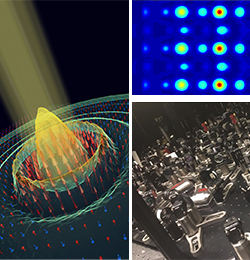
Disa Lab
Research in the Disa Lab centers around understanding and controlling the properties of quantum materials at the smallest length and time scales. Exploiting ultrashort light pulses from the THz to x-ray range, we delve into the emergent behavior of systems ranging from ferroelectrics to complex magnets to superconductors when excited out-of-equilibrium. The group is especially interested in studying light-matter interactions and light-driven processes in artificially engineered heterostructures with atomic dimensions, aiming to design new functionalities for next-generation computing and energy technologies.
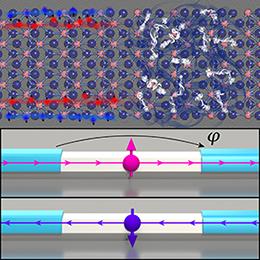
The Fatemi Lab
We are an experimental condensed matter physics and quantum devices lab located at Cornell University’s School of Applied and Engineering Physics. Our main pursuits are the discovery and application of new quantum electronic phenomena — an intersection of materials physics and applied quantum coherent devices. Specific areas of interest are the development of novel quantum bits, the discovery of new nano- and mesoscopic physics, and the investigation of correlated and topological states in 2d materials. Our main tools are cryogenic electronic and microwave measurement techniques and nanofabrication.
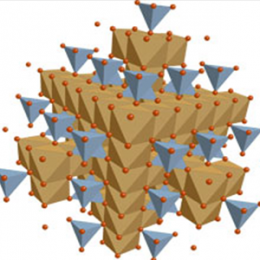
Fennie Group
The interests of the Fennie Research Group lie at the intersection of Materials Physics and Solid State Chemistry. Broadly characterized our work is centered on the use of first-principles informed theory to elucidate the principles that govern the relationship between the structure and the macroscopic behavior of complex materials in which lattice, magnetic, orbital, and/or electronic dofs are active. We are fascinated by systems in which understanding the structural complexity is key to explaining their macroscopic properties and in particular by systems where chemical intuition often breaks down.
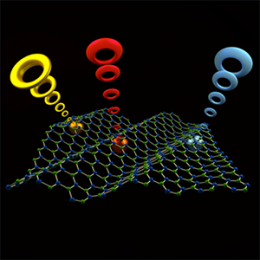
Fuchs Group
The Fuchs Group's research focuses on understanding and controlling solid-state spins at the nanoscale. We are interested in their interactions with their environment and electromagnetic radiation from the microwave to the optical domain. These interactions may find applications in magnetic technology and devices as well as in the emerging area of quantum information science and technology.
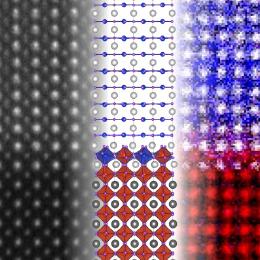
Kourkoutis Electron Microscopy Group
The Kourkoutis electron microscopy group develops and applies novel electron microscopy techniques to advance the fundamental understanding of materials and devices. Central to all of these efforts is the scanning transmission electron microscope (STEM), a tool that allows us to probe structural, chemical and electronic properties at the atomic scale.
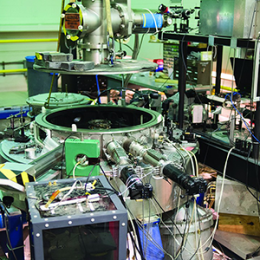
Laboratory of Plasma Studies
The Laboratory of Plasma Studies carries out a wide range of fundamental and applied research in pulsed-power-driven plasma physics including research related to inertial confinement fusion and astrophysics investigations. This broad range is fundamental to understanding different characteristics of plasmas, from microscopic to macroscopic scales. The integration between experiment, computation and theory is an important trait of this lab.

McMahon Group
The McMahon Lab researches the physics of computation, and how physical systems can be engineered to perform computation in new ways that provide benefits over current CMOS-based von Neumann processors. We have a particular emphasis on quantum computation, but we also explore other candidate future computing technologies that are classical, including photonic computing and neuromorphic computing.
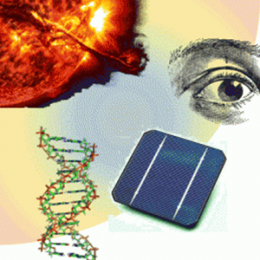
Moses Group
The Moses Group specializes in optical technologies and techniques for capturing the fastest events in natural and manmade devices. In the Moses Group, our laser research focuses on the development of hyperspectral light-pulse tools that can capture “ultrafast phenomena” (events so brief as to be barely detectable by state-of-the-art technology) in real time. We’re developing a unique instrument, a 10-femtosecond hyperspectral stroboscope, that will span the rainbow and then some! This device will emit 10-fs coherent synchronized light pulses covering the extreme ultraviolet, ultraviolet A/B/C, visible, near-infrared, and mid-infrared portions of the electromagnetic spectrum.
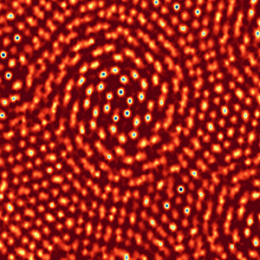
Muller Group
The Muller Group's electron microscopy research at Cornell University is focused on understanding the behavior of materials and devices at the atomic scale, with an emphasis on sustainable energy applications. Using some of the most powerful electron microscopes in the world, placed in specially-designed and environmentally isolated rooms, we are able to explore the chemistry, electronic structure and bonding inside objects as diverse as transistors, fuel cells, and two-dimensional superconductors.
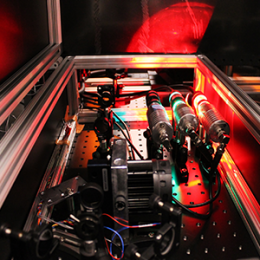
Pollack Group
In the Pollack Lab, we study interesting and relevant biophysical problems involving proteins, RNA, and DNA. With eight national research centers and laboratories focused on applied physics–four of which are supported by the National Science Foundation–our graduate students have access to some of the most advanced research equipment and technology in the world.

Shan Group
The Shan Group's research focuses on the electronic properties of nanoscale materials. Of particular interest are atomically thin two-dimensional crystals (such as graphene and MoS2) and their heterostructures. We develop an array of experimental techniques to probe, image and control the internal degrees of freedom of electrons and their new phases in these nanoscale systems.
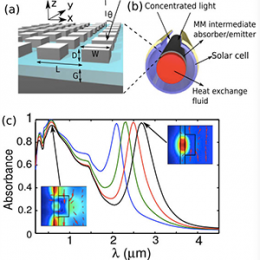
Shvets Group
The Shvets Group is engaged in theoretical, experimental, and computational research in several areas of applied and fundamental physics. Interaction between light and matter lies at the core of our research. Present areas of research fall into the following broad categories: (1) theoretical and computational plasma physics, with the emphasis on ultra-intense laser-plasma interactions, plasma-based particle accelerators, and high energy density plasma physics; (2) fundamental studies of metamaterials across the electromagnetic spectrum, with the emphasis on nanophotonics and plasmonics; (3) applications of nanophotonics to biological and biomedical sciences, and to the development of ultra-compact laser-driven particle accelerators.
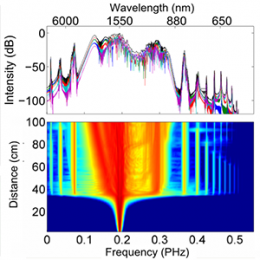
Wise Group
The Wise Group is currently focused on nonlinear wave phenomena in optical fibers. In one project, we develop fiber lasers that generate ultrashort light pulses. In another, we investigate nonlinear wave propagation in multimode fibers.
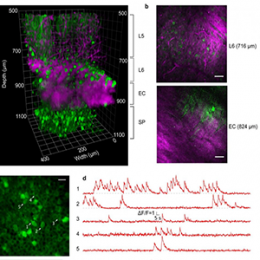
Xu Group
The Xu Group's research has two main thrusts: biomedical imaging and fiber optics. We are exploring new concepts and techniques for in vivo imaging deep into scattering biological specimens, such as mouse brain. We are developing new medical endoscopes for non-invasive real-time diagnostics of tissues without any exogenous contrast agent. We are developing novel optical fibers and fiber-based devices for biomedical imaging and optical communications.
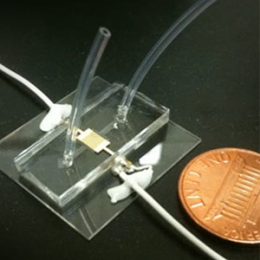
NO LONGER RECRUITING
Craighead Group
Dr. Craighead has led an active research program in nanofabrication and the science of nanoscale systems, with recent emphasis on biotechnology. He has explored methods for single biomolecule manipulation, detection and analysis. He has published over 400 research papers and book chapters and has 75 issued U.S. patents. He has organized and chaired a number of conferences and symposia on nanostructure science and technology. He was also part of the group that prepared the report leading to the original National Nanotechnology Initiative. His educational activity includes the development and teaching of courses from the freshman to graduate levels in nanostructure science and engineering.
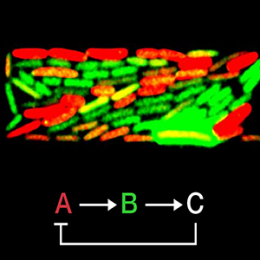
Lambert Group
The Lambert Lab pursues interdisciplinary research at the intersection of Physics and Quantitative Biology. Our research is motivated by the notion that complex behaviors in bacteria (e.g. pathogenicity, antibiotic resistance, gene regulation and cell-fate decisions, etc.) often arise from cell-to-cell variability, transient cellular dynamics, or heterogeneous phenotypic responses before spreading within a population. Consequently, to gain sufficient insight into active biological processes, information about microorganisms must be gathered at the single-cell level and in real time.
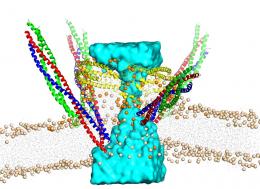
Lindau Group
The central research topic in the Lindau lab is the investigation of the molecular machine, which releases neurotransmitters and hormones in the body. This machine opens a pore allowing release of transmitter molecules from tiny storage compartments, the secretory vesicles. To determine how this works, the lab performs experiments to characterize the opening of these doors using specially developed microfabricated devices, combined with computer simulations that visualize the molecular mechanics. The widely known BoTox treatment modifies this machine and thereby reduces transmitter release.

